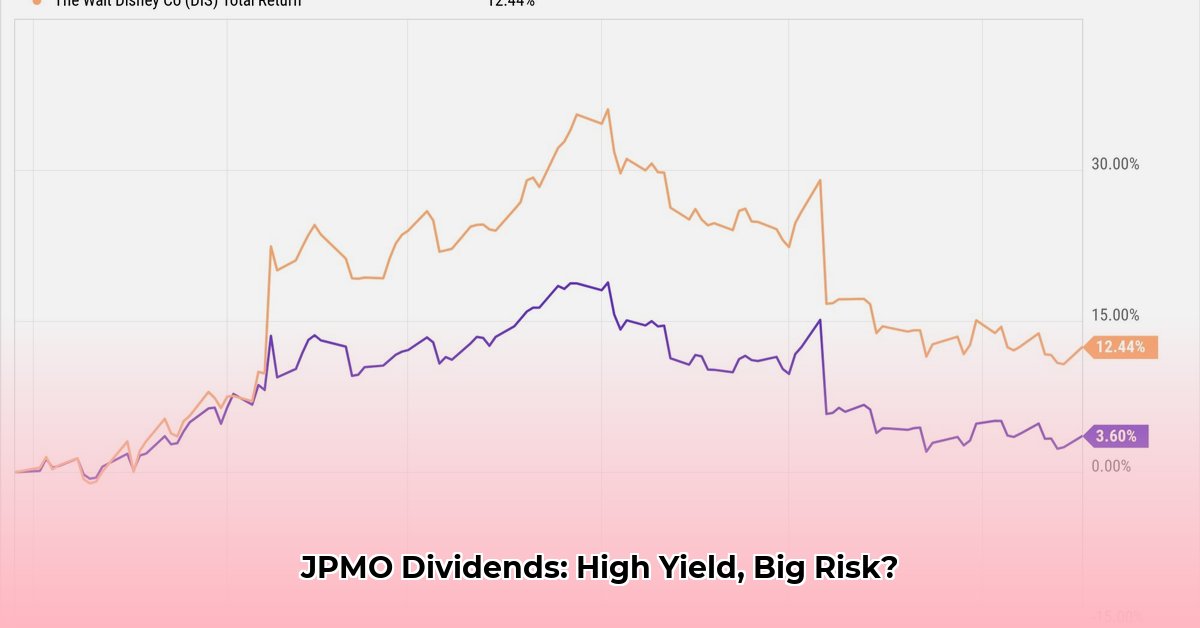
JPMO Dividend History: A Deep Dive into YieldMax's Strategy
The YieldMax JPM Option Income Strategy ETF (JPMO) offers a compelling proposition: high monthly dividend payouts. However, understanding the sustainability and inherent risks of this yield requires a thorough examination of its dividend history and underlying investment strategy. This analysis will explore JPMO's performance, highlighting both its strengths and weaknesses to help investors make informed decisions. Keywords: JPMO dividend, covered call strategy, income ETF, JPMorgan Chase, dividend yield, high-yield ETF, investment risk, option premium, JPM stock price, dividend sustainability.
How JPMO Generates Income: The Synthetic Covered Call Strategy
Unlike traditional ETFs that simply hold underlying assets, JPMO employs a synthetic covered call strategy focused on JPMorgan Chase & Co. (JPM) stock. This strategy involves selling call options on JPM shares, generating income from option premiums. In simpler terms, JPMO essentially "rents out" the right, but not the obligation, for others to buy JPM shares at a predetermined price within a specific timeframe. This generates consistent income, a portion of which is distributed as monthly dividends to investors. JPMO also invests in U.S. Treasury bonds, contributing additional income to the dividend stream.
This strategy, while offering predictable income, limits potential upside. If JPM's stock price rises significantly above the strike price of the sold call options, JPMO misses out on substantial gains. This trade-off between consistent income and potential for substantial capital appreciation is crucial to understanding JPMO's risk profile.
JPMO Dividend History: A Limited Snapshot and its Implications
Unfortunately, comprehensive, long-term historical data on JPMO's dividend payouts is scarce. While some publicly available sources report an average monthly dividend of approximately $0.37 per share over the past year, this limited timeframe prevents a robust assessment of long-term dividend sustainability. This lack of historical context underscores the difficulty in predicting future dividend payments, making long-term projections inherently risky. Further research is needed to obtain a clearer and more extensive historical perspective.
Weighing the Pros and Cons: A Balanced Perspective on JPMO
Before investing in JPMO, a balanced assessment of its advantages and disadvantages is crucial. The following table summarizes the key features, highlighting both benefits and drawbacks:
| Feature | Pros | Cons |
|---|---|---|
| Dividend Yield | High and regular monthly payments provide a predictable income stream. | Dividend amount is highly sensitive to market conditions and is not guaranteed. |
| Investment Strategy | Relatively straightforward; focuses on consistent income generation. | Limits potential for substantial gains if JPM stock price appreciates significantly. |
| Risk Profile | Losses are capped at the initial investment. | Significant downside risk if JPM's stock price declines, potentially exceeding dividend income. |
| Transparency | ETF's official documents provide a detailed explanation of its strategy. | Limited historical dividend data makes long-term dividend predictions challenging. |
Assessing Long-Term Dividend Sustainability: A Multifaceted Approach
The high dividend yield of JPMO is undeniably attractive, but its long-term sustainability requires a deeper investigation. Several factors must be considered to gauge the reliability of future payouts.
Analyzing the Risks and Rewards: Beyond the Current Yield
While the current monthly dividend yield is enticing, relying solely on this metric for long-term investment decisions is imprudent. The limited historical dividend data makes accurately forecasting future payouts difficult, particularly given the inherent sensitivity of JPMO's strategy to market fluctuations and JPM's stock price performance. Is this consistent high yield, sustainable long-term? The answer depends on a more thorough analysis.
JPMO's success is fundamentally tied to the performance of JPM stock and the option market. Adverse economic conditions or declines in JPM's stock price could negatively impact option premiums, potentially reducing or even eliminating dividend payouts. Furthermore, interest rate changes also play a crucial role, impacting both the income generated from Treasury bond holdings and the overall market environment.
Key Factors for a Comprehensive Assessment
A thorough evaluation of JPMO's long-term dividend sustainability requires a multifaceted approach beyond simply examining the current yield. This includes:
Payout Ratio Analysis: Determining the payout ratio (the percentage of earnings paid out as dividends) is crucial. A consistently high payout ratio might indicate potential future dividend cuts if earnings decline. Currently, readily available data on this ratio is limited, necessitating further investigation from reliable financial sources.
Historical Dividend Data Scrutiny: Accessing and analyzing historical dividend data is vital for understanding past trends, identifying consistent growth patterns, or detecting any significant reductions. This, again, is hampered by the limited data currently available.
Underlying Asset (JPM) Evaluation: JPM's financial health is paramount to JPMO's dividend sustainability. Analyzing JPM's earnings, debt levels, and overall financial strength provides crucial insights into the long-term viability of the strategy.
Interest Rate Outlook: Interest rate movements significantly influence the return from Treasury bond holdings, affecting the overall dividend income. Considering predicted interest rate trajectories is crucial.
Market Volatility Assessment: Market volatility, particularly its impact on option premiums, directly impacts the income generated by JPMO's covered call strategy. Thoroughly monitoring and analyzing market conditions are essential.
Peer Comparison: Benchmarking JPMO against similar ETFs employing comparable strategies provides valuable context for evaluating its dividend yield and risk profile.
Investment Implications and Conclusion
JPMO presents a compelling opportunity for income-seeking investors; however, its risk profile demands cautious consideration. The limited historical data and the inherent dependency on JPM's performance and market conditions necessitate a thorough understanding of its investment strategy. Investors should diversify their portfolios and consult with a financial advisor to assess whether JPMO aligns with their risk tolerance and overall investment objectives. Remember, past performance is not indicative of future results.